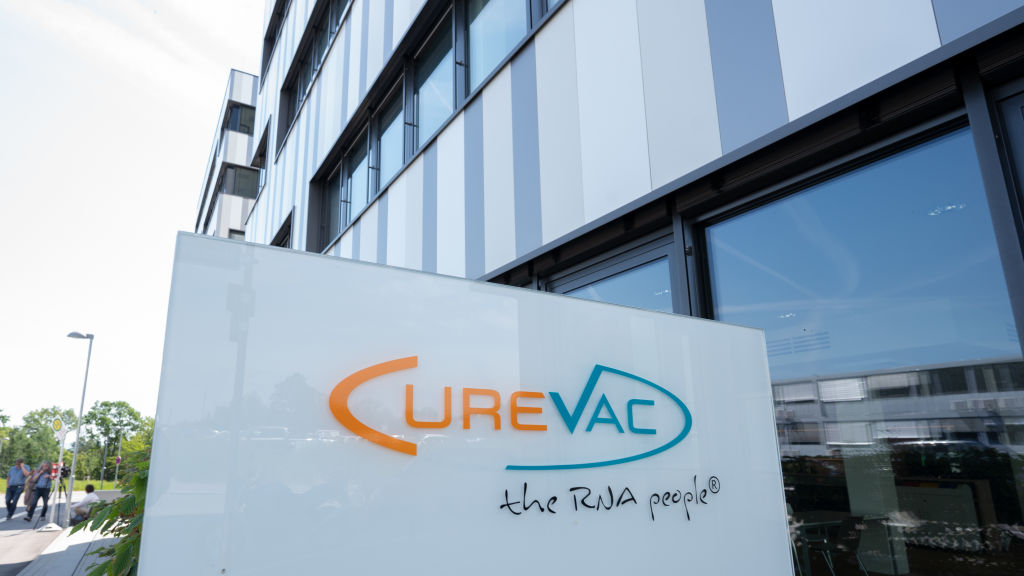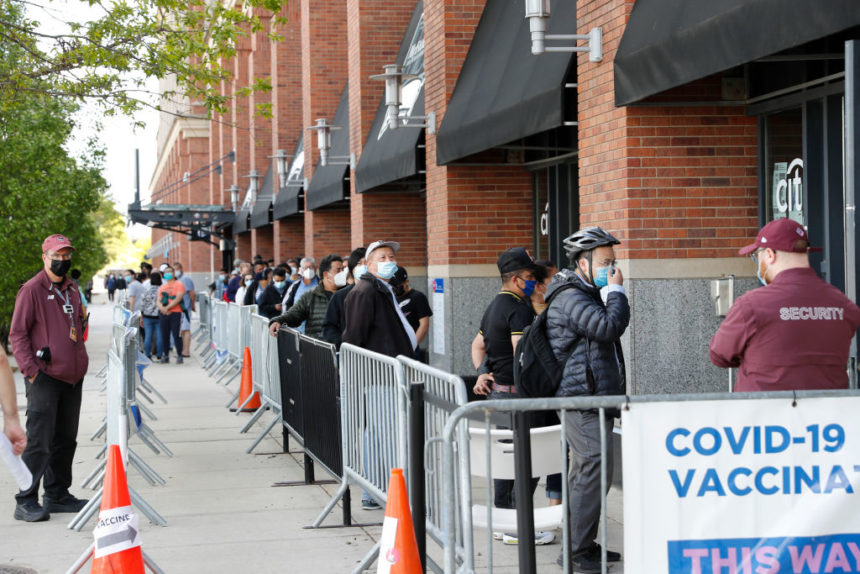Today’s Vaccine Project Newsletter is 2,204 words and will take you seven minutes to read.
The road to herd immunity, or a reasonable facsimile, is traveling along two parallel routes these days, each with its own roadside attractions.
The first path is the one taken by people 18 and older. The White House has declared June a “National Month of Action to mobilize an All-of-America sprint,” aimed at getting at least one COVID-19 shot into the arms of 70% of U.S. adults by July 4.
As of Tuesday, 63.8% of American adults (164.6 million people) had received at least one COVID-19 vaccination. To reach the goal of 70%, we’ll need to vaccinate another 16 million people in the next 25 days. The Biden administration’s slogan is We Can Do This. We’ll surely find out if we can.
With vaccination rates now sagging, the National Month of Action hopes to provide needed oomph and momentum with a multifaceted strategy leaning heavily on local outreach and education. Virtually every stakeholder you can think of is invited to pitch in, from your mayor and local pharmacy to the hundreds of grassroots organizations anointed as the COVID-19 Community Corps in early April. There’s also a new push nationwide, called Shots at the Shop, enlisting up to 1,000 Black-owned barbershops and hair salons as vaccine advocates and vaccination sites.
The second path is the one traveled by adolescents ages 12 to 17. The 16- and 17-year-olds have been eligible for the Pfizer/BioNTech vaccine since last December, while the 12- to 15-year-old set got their turn a month ago, when the Food and Drug Administration issued an emergency use authorization for the vaccine in that age group. As of last Friday, nearly 6 million U.S. adolescents under 18 had received their first shot. Moderna is now seeking authorization for its COVID-19 vaccine in 12- to 17-year-olds.
Middle school and high school youngsters won’t be eligible for the free beer that Anheuser-Busch is offering to everyone 21 and older if we reach the 70% milestone, nor do teens qualify for the million-dollar state vaccination lotteries that are cropping up from the redwood forests to the Gulf Stream waters. But they are eligible for free-ride four year college scholarships that a number of states (Ohio, New York, West Virginia, Kentucky, Washington and Delaware, among others) are offering to the young and vaccinated. High school junior Zoie Vincent, who received her prize-winning news in a FaceTime call from Ohio Governor Mike DeWine, hopes to go to medical school someday.
Adolescents and their parents are also being encouraged by their pediatricians and family physicians to get vaccinated. The Centers for Disease Control and Prevention is weighing in as well, with a new memo on summer camp (the vaccinated can go maskless) and a reminder that COVID-19 does occur in young people and can be severe enough to put them in the hospital.
A new report issued by the CDC notes that COVID-associated hospitalizations among adolescents increased during March and April and that nearly one third (31%) of 204 adolescents hospitalized with COVID-19 had to be admitted to the ICU and 5% needed mechanical ventilation. CDC Director Dr. Rochelle Walensky made a specific note of this study in urging parents to have their children vaccinated.
Before too long the vaccination effort will extend to virtually everyone. Both Pfizer/BioNTech and Moderna are conducting trials in children 6 months to 11 years of age. It’s possible that the youngest among us could be in line for vaccination later in the year or early in 2022.
While the July 4 goal of giving one shot to 70% of adults is a helpful benchmark and a call to action, we won’t have a full-screen view of how we’re doing until all age groups are eligible to be vaccinated. As it stands, we have fully vaccinated 53% of adults, 50% of all those 12 and older and just 42% of the total population. We have miles to go on this journey.
For now, the vaccination push focuses on the eligible and unvaccinated. Jonathan Carlyle, a 40-year-old Amazon delivery driver from South Toledo, Ohio, was one of them. He kept putting it off until the state’s Vax-a-Million lottery persuaded him otherwise. That was a good idea on his part; he just won $1 million.
Reaching the goal will require reaching millions of people who won’t win millions of dollars. Key elements of the National Month of Action include the Mayors Challenge to Increase COVID-19 Vaccinations, coordinated by the United States Conference of Mayors in collaboration with the White House; 92 cities are now signed on. Mayors of big cities are joining in (Atlanta, Charleston, Chicago, Cleveland, Dallas, Detroit, Houston, Indianapolis, Kansas City, Newark, New Orleans, Phoenix, San Antonio, Seattle and Washington, DC) as well as municipal leaders everywhere from Beaverton, Oregon and Wauwatosa, Wisconsin to Hope, New Jersey and Pembroke Pines, Florida. All are encouraged to share strategies that work.
The initiative with Black-owned barbershops and hair salons is a partnership among the White House and the Black Coalition Against COVID, the University of Maryland Center for Health Equity and hair product company SheaMoisture. Over the past 10 years, the University of Maryland Center has trained barbers and stylists as community health advocates to help raise public awareness of colon cancer, diabetes, and other issues. The COVID-19 effort is an extension, so to speak.
Until July 4, three of the country’s largest childcare providers – KinderCare, Learning Care Group and Bright Horizons – are offering free child care appointments to parents and caregivers who are getting vaccinated or recovering from vaccination. More than 500 YMCAs will offer free drop-in child care during vaccination appointments.
The National Association of Broadcasters is asking 7,000 radio and TV stations across the country to pitch in. Possible activities include hosting call-in Q&A sessions with medical professionals to answer viewers’ and listeners’ questions, using online platforms to share information about vaccines, hosting mobile vaccine events, or even giving a shot to a local personality live on air.
Vice President Kamala Harris, First Lady Jill Biden and Second Gentleman Doug Emhoff are taking turns on a national tour to promote vaccination, focusing on the South and Midwest.
More than 100 local organizations hosted more than 1,000 events over the first weekend in June, making phone calls, sending texts and canvassing in neighborhoods with low vaccination rates.
One such organization is Civic Nation, which launched its Made to Save initiative in April to increase COVID-19 vaccine access and equity among communities of color. Civic Nation has also partnered with The Creative Alliance and the agency Mekanism on a one-minute video spot featuring Carla Brown, an NP in Baton Rouge who lost her husband to COVID-19. She is now on a personal mission to vaccinate the homebound, the elderly and others who don’t have ready access to vaccines. See her story in Campaign.
A list of incentives offered by private businesses, from the Anheuser Busch free beer to the CVS Health #One StepCloser sweepstakes, is now available at www.vaccines.gov/incentives.
Another incentive, if you will, is the vaccination mandate: Get your shot if you want to keep your job. Indiana University Health, with 16 facilities in Indianapolis, is one of the most recent employers to issue a mandate. They’re giving workers until September 1 to be fully vaccinated, with exemptions considered for medical and religious reasons. The university has also issued a vaccination mandate for students, faculty and other staff, one of the 475 colleges adopting some type of vaccination requirement.
As Kimberly Bonvissuto points out in McKnight’s Senior Living, getting people vaccinated is a matter of finding out what works best for each organization, be it education, incentives or mandates. United Airlines has joined Delta in requiring new hires to provide evidence of COVID-19 vaccination. Meanwhile, Bonvissuto notes, employers continue to have questions about what is an acceptable vaccination incentive. How much is enough and what is coercive?

Lessons learned at the workplace
· In Campaign, Visha Naul, director of business marketing for Europe, the Middle East and Africa at Pinterest, shares what the pandemic taught her about inclusive leadership. It’s all about listening to the people you work with and the people you want to reach, she says. “Bring listening into your core working practices and into your values. It shouldn’t be on the odd occasion or when you really want people to buy into what you are doing for a one-off project. That’s not authentic and you’ll be quickly found out.”
· Russ Lidstone, group CEO of the Creative Engagement Group in London, shares six principles of successful hybrid working in Management Today Among them: Move ahead from the endurance phase of getting through the pandemic and determine (by listening) what kind of workplace your employees want to return to. Use technology to create an office environment that puts employee safety first. And develop a culture that regards remote workers and people in regional offices as first-class citizens fully engaged with and supported by the company.
· In PRWeek, Robert Sawatzky examines how companies can help employees cope with the pandemic’s impact on mental health. Managers can ask how employees are doing by checking in with them informally and casually, rather than engaging in heavy dialogue. They can also open up and talk about some of their own anxieties and struggles. Also suggested: easing off on performance measures during times of high stress, making sure employees take time off and allowing staff extra time to look after family or friends affected by COVID-19.
· Not everyone is going back to the workplace. The pandemic in 2020 pushed 1.7 million older adults into unplanned retirement, Kathleen Steele Galvin reports in McKnight’s Senior Living. Those hardest hit appear to be those least financially prepared for retirement.

The vaccine dashboard
· The Moderna and Pfizer vaccines are the first messenger RNA products to see the light of day, but they won’t be the last. Researchers are now using the technology in developing vaccines against flu, HIV, malaria, Zika and Ebola as well as in cancer immunotherapies. Nation’s Health summarizes recent investigations.
· France is opening up to fully vaccinated American tourists starting today. You’ll need a negative test for the virus as well. France’s rules on foreign visitors depend not only on vaccination status but on which vaccine you’ve had and how well your country is controlling coronavirus outbreaks. As comedian Steve Martin once said: “Those French – they have a different word for everything.”
· Seven European countries have begun using a digital green certificate showing whether the individual is fully vaccinated against COVID-19, has recovered from the disease or tested negative in the past 72 hours. Any one of those is a green light to come and go. All 27 countries in the European Union will begin using the certificates by July 1; the seven with a head start are Bulgaria, Croatia, the Czech Republic, Denmark, Germany, Greece and Poland.
· The world has administered more than 2 billion doses of COVID-19 vaccine. More than 70% of them have gone into arms in China, the U.S., the EU and India.
· The U.S. is getting ready to share 25 million doses of COVID-19 vaccine with the rest of the world. Most of it will go through the COVAX global initiative to Latin America, the Caribbean, South and Southeast Asia and Africa.
Parting shot
The 70% vaccination goal is recognizable and attainable, but based on our experience to date the results will vary significantly around the country. The CDC points out that vaccination rates remain low in areas of social vulnerability and that disparities in coverage have widened as vaccine eligibility has expanded. The New York Times notes that 30 states may not attain the 70% benchmark; as of Monday, 14 jurisdictions had already reached the goal but several states were still in the 40% to 50% range.
Meanwhile, areas that fall well short of 70% may be sitting ducks for outbreaks, as case rates among the unvaccinated remain high. Ongoing outbreaks in nursing homes have been traced to unvaccinated staff, while a recent VA study emphasized the ease of transmission among unvaccinated healthcare workers. Alicia Lasek and Kathleen Steele Galvin have details in McKnight’s Long-Term Care News.and McKnight’s Senior Living.
We can celebrate the fact that COVID-19 cases and deaths have fallen to their lowest levels since March 2020 if we keep in mind that getting as many people vaccinated as possible remains the best way to keep the pendulum swinging in the right direction. “I continue to see promising signs in CDC data that we are nearing the end of this pandemic in this country,” says director Walensky. “However, we all have to do our part and get vaccinated to cross the finish line.”
…and some songs
When You Believe, Whitney Houston and Mariah Carey
Ain’t No Mountain High Enough, Marvin Gaye and Tami Terrell
Climb Every Mountain, Shirley Bassey
Thanks so much for being here with us. We’ll bring you a fresh new edition of the Vaccine Project Newsletter next Wednesday. Stay well.







